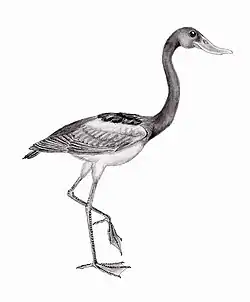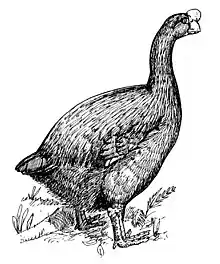| Lavanttalornis Temporal range: Miocene | |
|---|---|
| Scientific classification | |
| Kingdom: | |
| Phylum: | |
| Class: | |
| Order: | |
| Family: | |
| Genus: | †Lavanttalornis Bochenski et al., 2023 |
| Type species | |
| †Lavanttalornis hassleri Bochenski et al., 2023 | |
Lavanttalornis is an extinct genus of duck from the Miocene of Austria. The genus is known from a nearly complete specimen preserved across multiple rock slabs and stems from a locality which may represent a possible lagerstätte. It currently includes only a single species, L. hassleri.
History and naming
The remains of Lavanttalornis were discovered in the Lavanttal of Carinthia in the south of Austria, which is known for the preservation of a diverse fauna dating back to the Miocene. Although not the first nor only fossil duck discovered in Austria, Lavanttalornis stands out as being the best preserved and is counted among the few nearly complete fossil ducks known worldwide. The fossil is preserved in four slabs, designated LMK-Pal 7453a to LMK-Pal 7453d, which are housed in the paleontological collection of the Landesmuseum Kärnten (also known as the kärnten.museum).[1]
The scientific name Lavanttalornis means "bird from the Lavanttal", combining the German name for the area it was discovered in with the Ancient Greek word ornis for bird. The species name derives from its discoverer, Andreas Hassler, a professional veterinarian and amateur paleontologist.
References
- ↑ Bochenski, Z.M.; Happ, J.; Salwa, G.; Tomek, T. (2023). "An intriguing new species of dabbling duck (Aves: Anseriformes) from the middle Miocene of Austria". Palaeontologia Electronica. 26 (3). doi:10.26879/1334.


